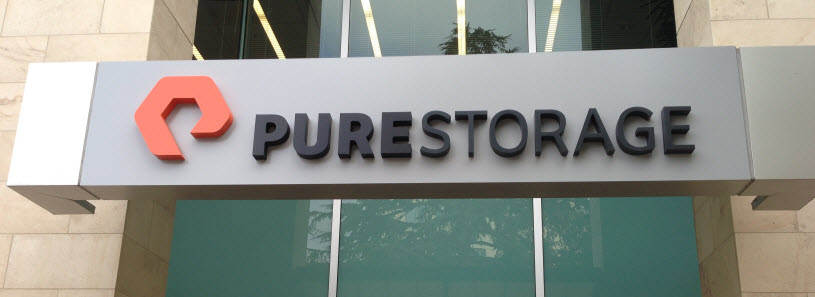 NEWS
NEWS
 NEWS
NEWS
 NEWS
NEWS
In the first of what could be a wave of initial public offerings following the biggest technology bubble in 15 years, flash-storage maker Pure Storage, Inc. filed to go public in a market that delivered questionable returns for other so-called “unicorns.”
Pure, which last year raised $225 million on a valuation $3 billion, said it expects to raise $300 million by selling shares, making it the biggest enterprise technology company to file for an IPO this year. Pure’s prospectus revealed that it has 1,100 customers, including Barclays PLC, Xerox Corp. ConocoPhilips and Duke Energy, and that more than 100 of its customers have spent over $1 million on Pure products.
However, the document also showed a company still operating deeply in the red. While revenue more than quadrupled in the 12 months ended Jan. 31 to $174.5 million, losses more than doubled to $183 million from $78.5 million the previous year. The company’s sales and marketing expenses nearly tripled during that time.
Pure competes against legacy storage vendors like EMC with all-flash arrays that it claims deliver 10 times the performance in one-tenth the floor space. Its S-1 statement says it has been awarded 200 patents and has more than 150 patent applications pending in the U.S. and overseas. Pure Storage has 1,100 employees.
The storage market hasn’t been exactly kind to IPOs recent. Violin Memory Inc. went public in 2013 and immediately encountered troubles, prompting it to fire its CEO less than three months later. Its stock now trades at 70% below its IPO price. Fusion-io, Inc. went through management turmoil following its public offering before being purchased by SanDisk Corp. at only a small premium to its market price.
Last decade, a spate of companies went public riding the storage virtualization and data reduction craze. Several, such as 3PAR, Compellent and Isilon got traction, but none of them were blockbusters as public companies. “Data Domain (which was acquired by EMC in for $2.1 billion in 2009) probably fared best of the public lot,” said Wikibon Chief Analyst David Vellante. He noted that the major storage vendors all now have competitive flash portfolios, which makes the market more difficult for pure-plays to achieve what he calls “escape velocity.”
Wikibon analyst George Gilbert said Pure is moving while the market is hot, but it needs to execute on the fundamentals. “Wall Street is paying for top line growth right now, but when the market starts worrying about cash generation or consumption, a lot of valuations will get knee-capped,” he said.
Support our mission to keep content open and free by engaging with theCUBE community. Join theCUBE’s Alumni Trust Network, where technology leaders connect, share intelligence and create opportunities.
Founded by tech visionaries John Furrier and Dave Vellante, SiliconANGLE Media has built a dynamic ecosystem of industry-leading digital media brands that reach 15+ million elite tech professionals. Our new proprietary theCUBE AI Video Cloud is breaking ground in audience interaction, leveraging theCUBEai.com neural network to help technology companies make data-driven decisions and stay at the forefront of industry conversations.